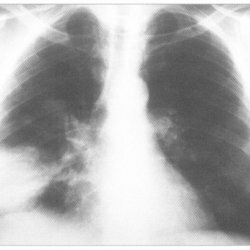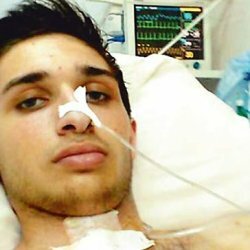How to treat cough at home?
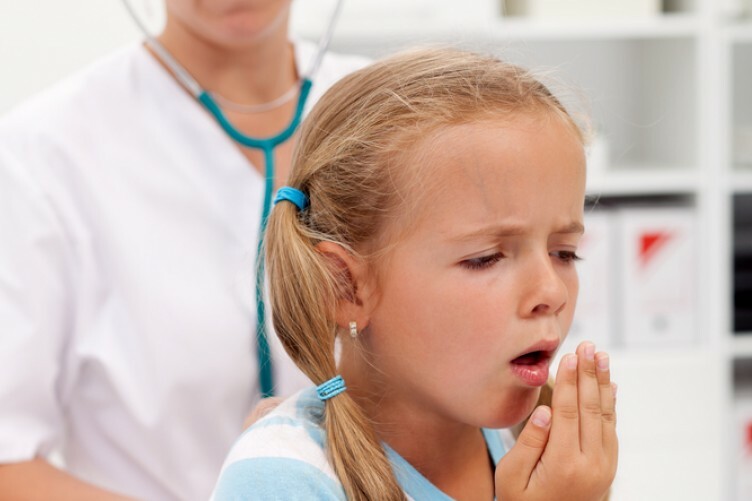 Cough is a nonspecific protective reaction of the body.Its function is to cleanse the respiratory tract from sputum, dust or a foreign object.If you have a cough, the person, first of all, will think about the diseases of the respiratory system.In fact, this symptom can occur when other organs are affected.
Cough is a nonspecific protective reaction of the body.Its function is to cleanse the respiratory tract from sputum, dust or a foreign object.If you have a cough, the person, first of all, will think about the diseases of the respiratory system.In fact, this symptom can occur when other organs are affected.
Why do people cough?
Recommended to read: Cough receptors are located on the surface of the mucous membrane of the airways.Under the influence of a provoking factor, these cells are activated.The obtained information from the receptors on the ascending nerve fibers reaches the cough center located in the medulla oblongata.Here there is an analysis of the information received.Then the descending nerve fibers receive a signal to the intercostal, diaphragmatic, abdominal muscles.The contraction of muscles leads to the expulsion of foreign matter from the respiratory tract.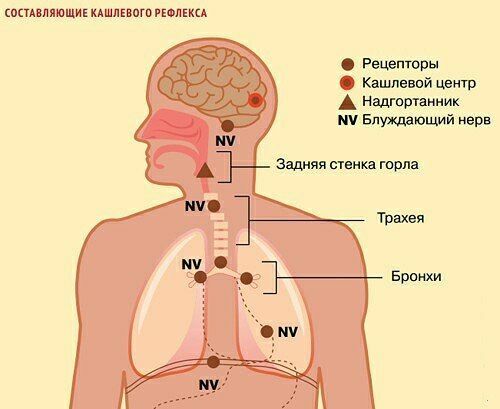
Duration of cough
Cough can occur on the background of a cold and disappear after a week.And sometimes coughing worries a person for a long time and the cause of this symptom is not at all obvious.The duration of cough is a very important characteristic. Depending on the duration I classify three variants of cough:
- Acute - duration up to three weeks;
- Subacute - lasts four to eight weeks;
- Chronic - lasts more than eight weeks.
Acute cough in most cases is caused by ARVI.The symptom disappears after a person's recovery.It is worth noting that children often have a post-infection cough, which is almost impossible to treat.This syndrome can occur within one to two months.In such cases, doctors talk about subacute coughing.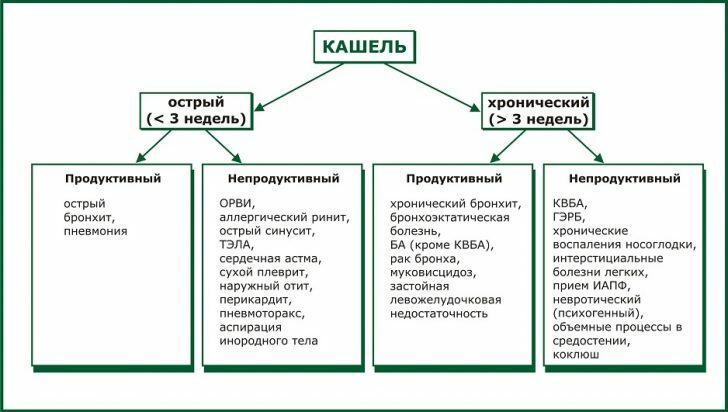 Prolonged cough can be triggered not only by inflammatory diseases of the respiratory system, but also by cardiovascular insufficiency, neoplasms in the lungs and mediastinum.In addition, the causes of chronic cough can be bronchial asthma, gastroesophageal disease, and nasal swelling syndrome.
Prolonged cough can be triggered not only by inflammatory diseases of the respiratory system, but also by cardiovascular insufficiency, neoplasms in the lungs and mediastinum.In addition, the causes of chronic cough can be bronchial asthma, gastroesophageal disease, and nasal swelling syndrome.
Types of cough
It is common to divide the cough into unproductive and productive.Unproductive( dry) cough is characteristic for the initial stage of acute respiratory viral infection.Gradually, the properties of phlegm change and the patient notices that the cough becomes wet.So with the help of bronchial secretion the body tries to force out the virus from the respiratory tract.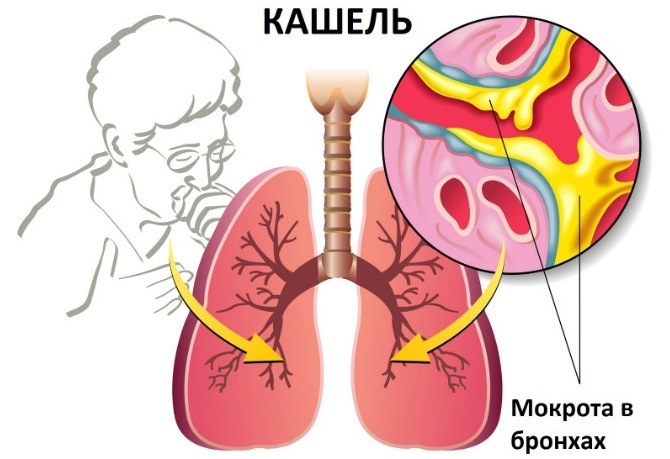 Productive cough is characteristic of acute and chronic forms of bronchitis, pneumonia, bronchiectasis, bronchial asthma, tuberculosis, cystic fibrosis, as well as congestive left ventricular failure.
Productive cough is characteristic of acute and chronic forms of bronchitis, pneumonia, bronchiectasis, bronchial asthma, tuberculosis, cystic fibrosis, as well as congestive left ventricular failure.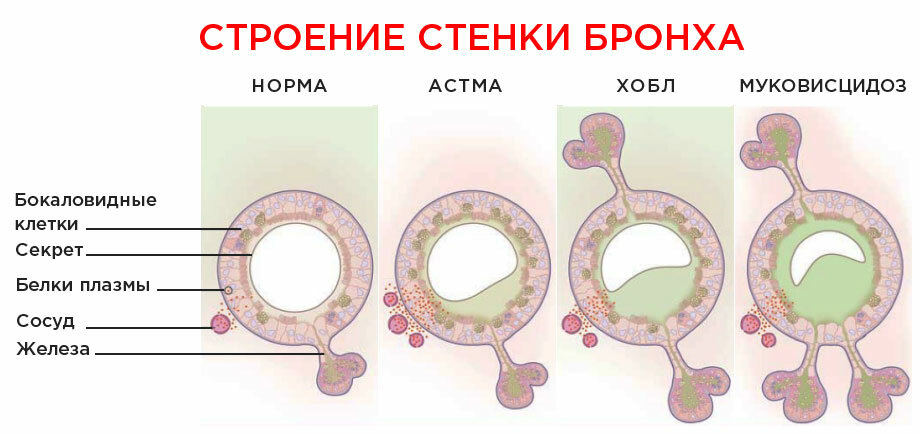 To determine the cause of the cough, it is important to study not only its duration and appearance, but also the nature of the sputum. Sputum is:
To determine the cause of the cough, it is important to study not only its duration and appearance, but also the nature of the sputum. Sputum is:
- Serous( liquid, easily foaming);
- Mucous( colorless or whitish, dense);
- Purulent( yellow-green or brown, creamy consistency);
- Mixed( combines the characteristics of mucous and purulent sputum);
- Bloody( phlegm with a trace of blood).
Causes leading to cough
To determine the cause of the cough is very important.This will help formulate the diagnosis and prescribe an effective treatment.Often cough is a symptom of a dangerous disease, which is important to identify in a timely manner.
Infectious diseases of the respiratory system
Cough against the background of the acute respiratory infections occurs literally in a day or two.Patients with this diagnosis have general weakness, fever, runny nose, headache.Viral infection is capable of affecting various parts of the respiratory tract. of pharyngitis is characterized by perspiration and sore throat.
These symptoms give a person discomfort.Coughing, the person seems to be trying to get rid of the slime accumulated in the throat. Laryngitis is accompanied by a painful, dry, barking cough.When the larynx is inflamed, the voice becomes hoarse.Children can develop a false croup against the background of ARVI.This condition is characterized by stenosis of the larynx caused by edema and spasm of its walls. For cereals are characteristic:
- Vicious barking cough;
- Vulnerability of the voice;
- Noisy, bubbling breath( stridor);
- Inspiratory dyspnea( occurs during inspiration);
- Excitation and anxiety of a sick child.
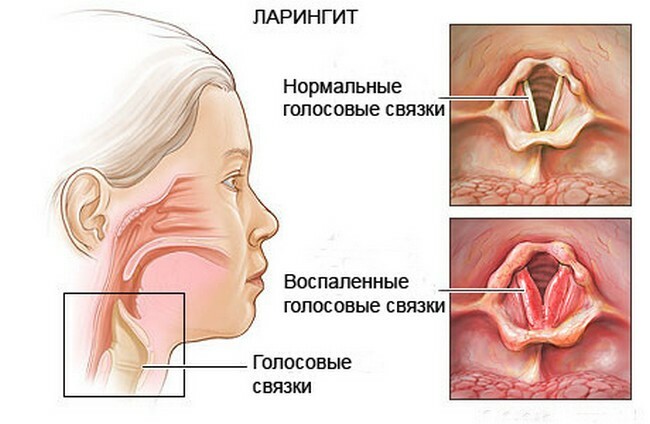 False groats of with a fourth degree of narrowing of the larynx lumen can lead to death due to asphyxiation.
False groats of with a fourth degree of narrowing of the larynx lumen can lead to death due to asphyxiation.
Note: true croup is observed in diphtheria lesions of the larynx.The disease develops gradually.Intoxication is poorly expressed, the temperature can rise slightly.With true croup, loss of voice is observed.During the examination, the presence of fibrinous whitish films, covering the larynx, yawn, amygdala, is determined.The danger of true croup is that the narrowing of the laryngeal lumen increases regardless of the intensive therapy.In the risk group are not vaccinated against diphtheria kids.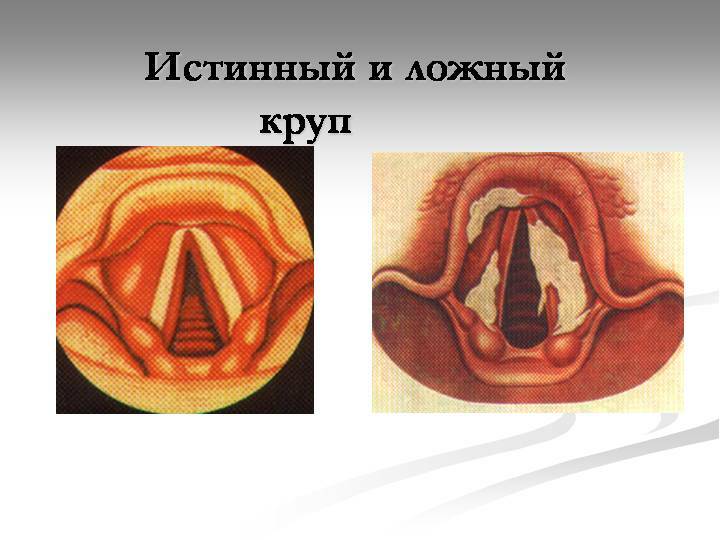 ARVI is also often manifested by by the tracheitis .For inflammation of the trachea is characterized by a loud, deep cough, which is accompanied by pain behind the sternum.And for bronchitis , soreness in the chest is not characteristic.Cough with defeat of the bronchi loud, thoracic.Sometimes even at a distance, without the use of a phonendoscope, wheezing is audible.
ARVI is also often manifested by by the tracheitis .For inflammation of the trachea is characterized by a loud, deep cough, which is accompanied by pain behind the sternum.And for bronchitis , soreness in the chest is not characteristic.Cough with defeat of the bronchi loud, thoracic.Sometimes even at a distance, without the use of a phonendoscope, wheezing is audible.
Complicated ARVI( especially influenza), characterized by the development of bacterial pneumonia .With pneumonia, a deep cough with a thick yellowish-green sputum is noted.If the pleural pathway is involved in the pathological process, there are pains in the chest, greatly intensifying during inspiration.Against the background of the refusal of vaccination, cases of an infectious disease such as whooping cough became more frequent.The illness develops gradually, the temperature rises slightly, dry cough and runny nose appear.However, the cough intensifies and becomes spasmodic.During an attack after a wheezing breath, there are several consecutive cough shocks that follow one another during one exhalation.Often cough accompanied by vomiting or mucus.Such attacks can be twenty and thirty per day.
It is impossible not to mention pulmonary tuberculosis .This ailment is accompanied by a wet cough, often with the spitting of bloody sputum.Patients with tuberculosis are characterized by weight loss, weakness, chills in the evening, night sweats.It is worth noting that in the presence of cough for more than two weeks, first of all, it is necessary to exclude tuberculosis.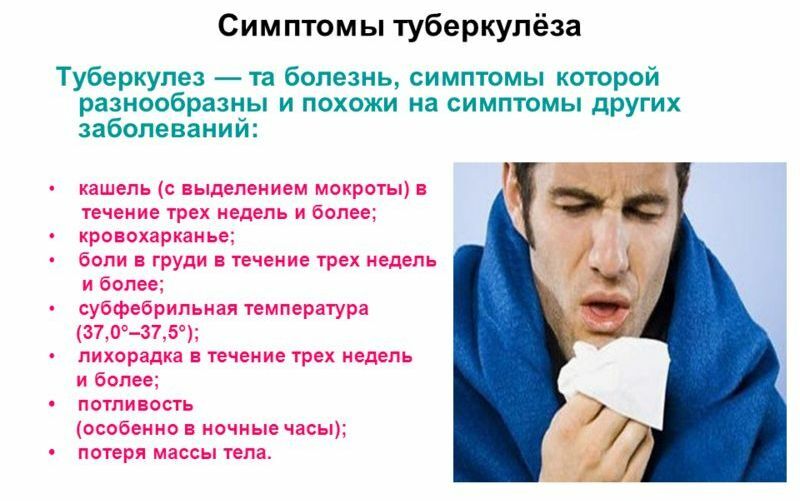
Non-communicable diseases of the respiratory system
If a child has a cough for a long time, but there are no signs of an infection, the congenital diseases of the bronchi should be ruled out. These diseases include:
- Bronchoectatic disease;
- Cystic fibrosis.
Bronchoectatic disease is characterized by the expansion and deformation of the bronchi with accumulation of mucopurulent sputum in them.The disease is characterized by a productive cough with the discharge of purulent sputum, especially in the morning.Often children are worried about shortness of breath while exercising.During an exacerbation there may be a slight increase in body temperature.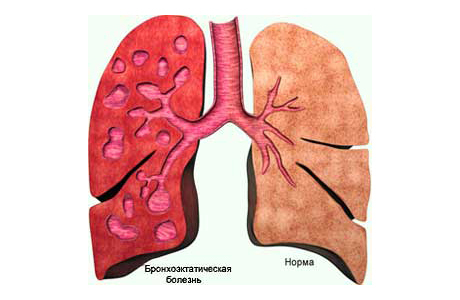 Cystic fibrosis is a disease caused by the defeat of endocrine glands and increased production of thick, viscous mucus.
Cystic fibrosis is a disease caused by the defeat of endocrine glands and increased production of thick, viscous mucus.
Allocate such forms of the disease:
- Pulmonary;
- Intestinal;
- Mixed;
- Atypical.
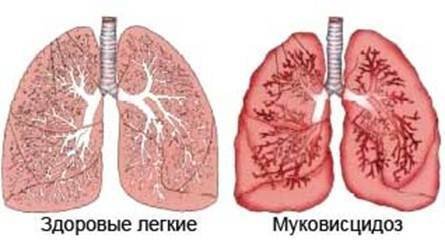 With pulmonary form, children have asthma attacks, a persistent cough with viscous sputum, intensifying at night.Against the background of a constant accumulation of mucus in the bronchi, the bacterial flora is often attached, which leads to prolonged pneumonia.The mixed form of cystic fibrosis is characterized by the addition of symptoms characteristic of the defeat of the digestive tract.
With pulmonary form, children have asthma attacks, a persistent cough with viscous sputum, intensifying at night.Against the background of a constant accumulation of mucus in the bronchi, the bacterial flora is often attached, which leads to prolonged pneumonia.The mixed form of cystic fibrosis is characterized by the addition of symptoms characteristic of the defeat of the digestive tract.
Relapsing cough should lead to the thought of bronchial asthma .It is an inflammatory immune-allergic disease.Provoke an attack can all kinds of factors, both external and internal.
Recommended to read:For the disease is characterized by:
- An agonizing, persistent cough, more common at night.After coughing, there is a discharge of vitreous sputum.
- Expiratory dyspnea( exhaled).
- Whistling wheezing that is audible to another person at a distance.
- Attacks of suffocation.
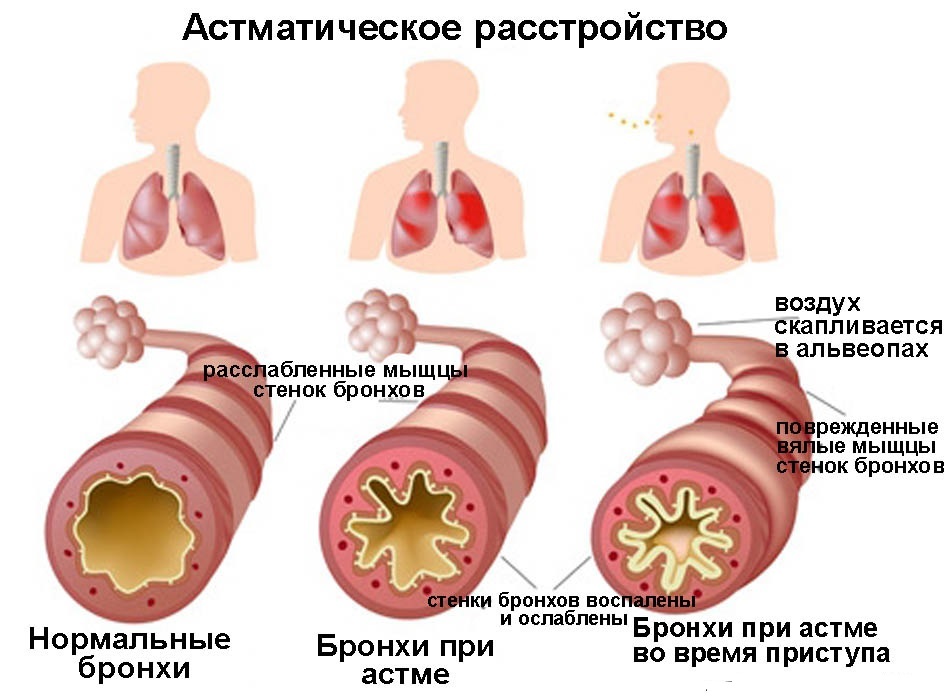 When talking about coughing in children, one should not forget about the likelihood of falling into a foreign body in airways. In such cases, the cough begins suddenly( after swallowing or inhaling small objects) and can be very pronounced, up to choking.
When talking about coughing in children, one should not forget about the likelihood of falling into a foreign body in airways. In such cases, the cough begins suddenly( after swallowing or inhaling small objects) and can be very pronounced, up to choking.
If an adult has a cough, this may indicate COPLE ( chronic obstructive pulmonary disease), especially if he smokes.Cough from smokers is obtrusive, unproductive.Especially this symptom is expressed after waking up and disappears after smoking a cigarette.It should not be overlooked that coughing can be a symptom of oncological lung diseases and mediastinum.
Cough with cancer is more often unproductive, later the blood sputum branch joins.On the oncological process may indicate a loss of body weight, severe weakness, pain in the chest.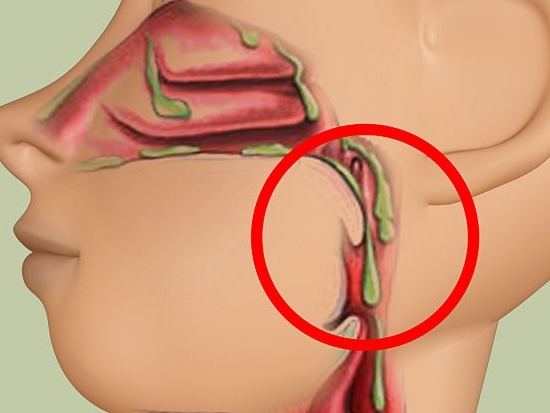 In the presence of chronic coughing, it can be assumed nasal swelling syndrome .This syndrome develops against the background of inflammatory and allergic processes in the nasal cavity, paranasal sinuses, and also the pharynx.In the presence of such conditions, mucus is actively produced, which drains along the pharynx and then accumulates in the laryngopharynx.When a person is in a horizontal position, the slime flows down unimpeded.Therefore, in patients with this disease, cough is worse during sleep.
In the presence of chronic coughing, it can be assumed nasal swelling syndrome .This syndrome develops against the background of inflammatory and allergic processes in the nasal cavity, paranasal sinuses, and also the pharynx.In the presence of such conditions, mucus is actively produced, which drains along the pharynx and then accumulates in the laryngopharynx.When a person is in a horizontal position, the slime flows down unimpeded.Therefore, in patients with this disease, cough is worse during sleep.
Cough, not caused by the pathology of the respiratory system
Cough can be caused by not obvious at first glance reasons.Thus, with cardiovascular insufficiency, dry cough and shortness of breath appear, which increase after exercise. In addition, there are symptoms that characterize the lesions of the cardiovascular system:
- Increased pressure;
- Weakness, fast fatigue;
- Pressing pain in the heart.
 By the way, in the treatment of hypertension, patients are often prescribed drugs from the group of ACE inhibitors.Taking medications of this group can cause a dry chronic cough.
By the way, in the treatment of hypertension, patients are often prescribed drugs from the group of ACE inhibitors.Taking medications of this group can cause a dry chronic cough.
Cough without can also occur with gastroesophageal reflux disease.This is most likely due to microaspiration of the stomach contents.The disease is also characterized by heartburn, eructation, difficulty swallowing, pain behind the sternum.
Cough treatment at home
Recommended to read:Cough medications
Important! Since cough is a protective reaction, during treatment, one should strive not to get rid of it, but to alleviate it.Medicines should be prescribed by a doctor.Central cough suppressants depress the cough center.Their use is justified in those cases when, firstly, cough is unproductive, and secondly, when coughing attacks are accompanied by vomiting and lead to exhaustion of the patient.
Before starting treatment, you should find out whether the cough is dry or wet.With a damp cough with hard-to-separate viscous sputum, doctors prescribe mucolytic drugs. Among the most famous representatives of this drug group:
- ACS;
- Lazolvan;
- Bromhexine.
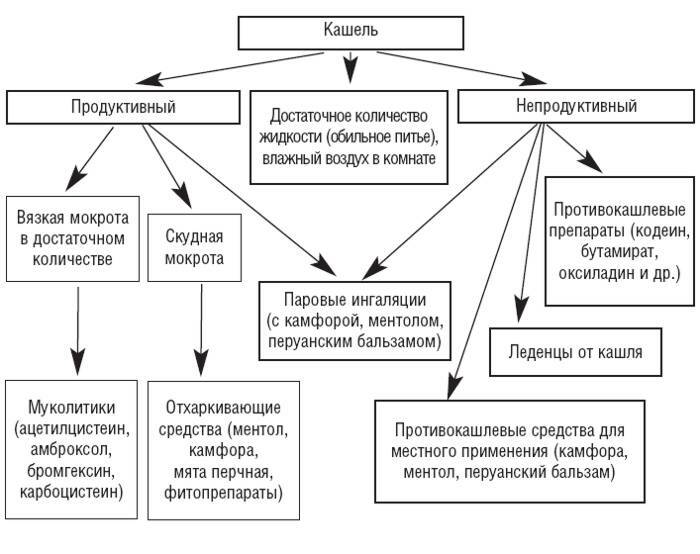 In the case of a cough accompanied by a small amount of sputum, expectorants are prescribed.The use of medications from this drug group helps stimulate the secretion of mucus by the bronchial glands, which makes it more fluid.In addition, the cough reflex increases, which contributes to a more effective cleansing of the bronchi. Expectorants include :
In the case of a cough accompanied by a small amount of sputum, expectorants are prescribed.The use of medications from this drug group helps stimulate the secretion of mucus by the bronchial glands, which makes it more fluid.In addition, the cough reflex increases, which contributes to a more effective cleansing of the bronchi. Expectorants include :
- Muciltin;
- Althea root;
- Licorice root;
- Potassium iodide;
- Broncholitin;
- Pertussin.
If cough is caused by an infection, etiotropic drugs( antiviral, antibacterial, anti-tuberculosis, etc.) should be used.
Steam inhalation for cough
How to treat a cough after the flu at home?One way is steam inhalation.
Note: , children under the age of two do not need to do such procedures, there is a risk of an airway spasm.
To prepare a decoction for inhalation it is worth using herbs that have expectorant properties.For example, you can pour into the dishes two tablespoons of thyme, sage or coltsfoot, and then pour boiling water.You can add to the broth a couple drops of essential oils of eucalyptus or menthol.The broth can be poured into a pan or basin, sit next to and cover the head with a towel.Breathe with a mouth for five to ten minutes.Also, nebulizers can be used to treat cough.
Treatment of cough folk remedies
Recommended to read: There is a large number of folk recipes that can help in the fight against coughing.Before using them, consult a doctor.
One of the most famous recipes is a radish remedy.For cooking, you need to take a black radish, wash, trim the tip, and then cut the flesh.Pour honey into the cup.Then the radish should be covered with a sheet of paper, top cut off the top of the root.Radish put in a glass of water.After five hours, the contents can be poured into a glass.You should drink a spoonful of liquid before eating.
How to treat a child's cough with figs?Pour the milk into the pan, add three or four chopped fig fruits, put on the fire.It is necessary to bring the milk to a boil.Then let the broth cover and let it brew.When the liquid cools, you can take it.Drink milk should be a glass a day, always in a warm form.
A decoction from the root of ayr helps cope with coughing.For its preparation, pour a tablespoon of herb into two hundred milliliters of boiling water.Stir, after ten minutes turn off and cover.When the broth cools down, strain it.You should drink a glass of milk before meals in about half an hour.A day should drink five hundred milliliters of broth.
Grigorova Valeria, medical reviewer


